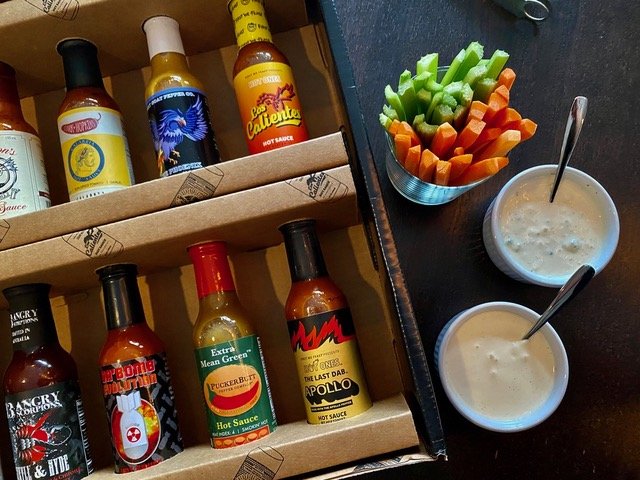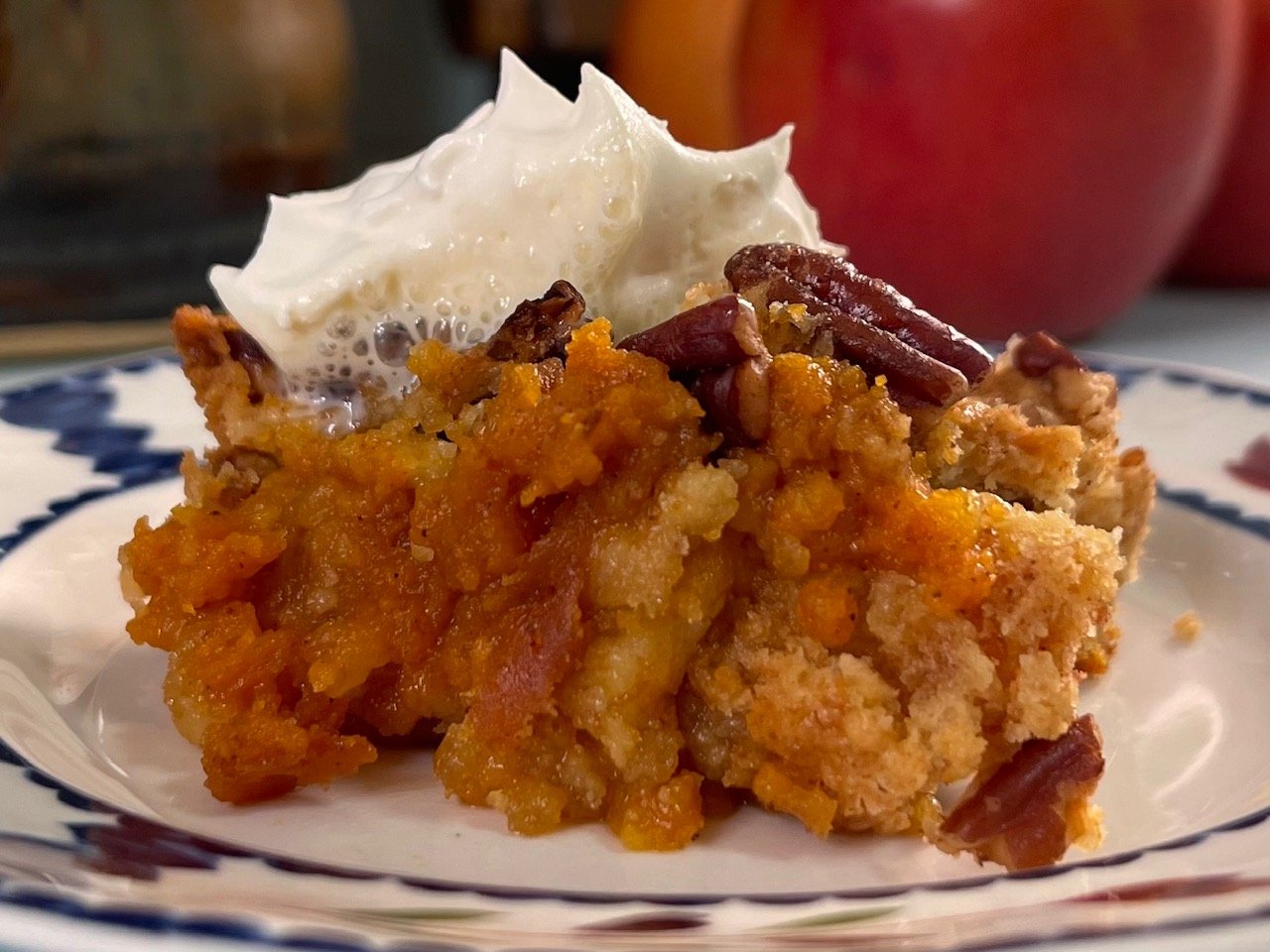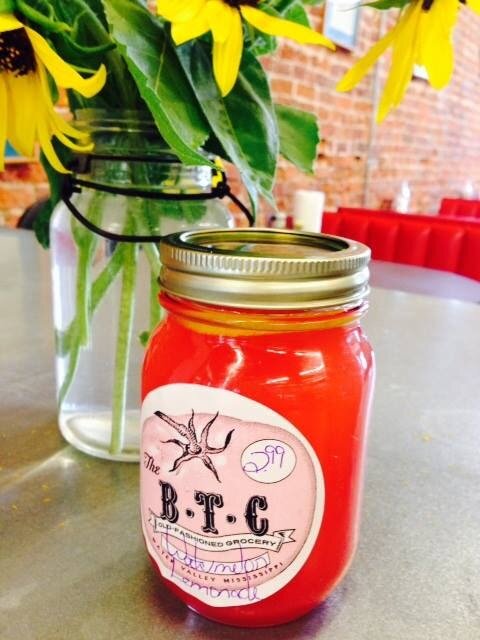As 2021 draws to a close, we here at Grab The Corkscrew are looking back over the year and counting our blessings.
We are certainly thankful for our group of writers, our blog turning two last month, and all of the wonderful readers!
In the spirit of giving, we present to you some of our favorite things and pray that 2022 brings us all a renewed enthusiasm for cooking, dining, and sharing, and for love, the core of it all.
Cheers …
Wine & Spirits
Franco Serra Barolo – It is no secret I love wine (red, white, rose, you name it!), but I have definitely refined my tastes over the years, and dry Italian reds are definitely some of my favorites. Our wine rack is always stacked with several bottles of this Barolo. Reasonably priced at around $35 per bottle, it will not break the bank and yet is a quality full-bodied red, which pairs excellently with meats and cheeses. (Amanda)
Campo Viejo Rioja - Buddy and I found this inexpensive Spanish red wine that we love. It’s fruity and perfectly smooth, but not sweet. Prices range from $10 - $20. If you try any of the older reserves, let it breathe for just a few minutes before pouring. If you cannot find the Campo Viejo, look for any Spanish red that is made with a tempranillo grape (key ingredient), in particular those from the Rioja region, though the blends are delicious, too. (Cam)
Broadbent Vinho Verde - I always keep an extra bottle of this light, refreshing white in my refrigerator. This Portuguese table wine is a blend of green grapes that’s perfectly spritzy and dry at the same time. At around $10, it’s the perfect price point for serving to friends over brunch or a fish dinner. I jokingly call this my “mama wine.” Because of its low alcohol content, you can enjoy a few glasses without feeling worse for the wear. (Mary Margaret)
Segura Viudas Brut Heredad Reserva Cava - This is the ultimate “bring a bottle of wine” choice for the holidays. If you haven’t seen this thing … you have to check it out. It’s a standard 750mL bottle of Spanish sparkling, but the actual bottle is decidedly fat, with an embossed metal base that’s super sexy and looks like it costs way more than $21. It also just happens to taste great, too! (Maggie)
Moet and Chandon Champagne – I confess. I’m fancy. Cannot deny it. There is always something sparkly and chilling in our refrigerator (no matter the time of year), and 9 times out of 10 it is going to include a bottle of this champagne. Everyone should have a good bottle of champagne on hand; for special occasions, if nothing else. Sometimes after an especially long day, though, it is nice to pop a cork on this fruity (and much too easy going down) bubbly spirit. (Amanda)
Cooking & Food
Better Than Bouillon bases - I grew up cooking with those cute, square cubes of bouillon for soups, stews and the like, but the Better Than Bouillon bases are far and above a better solution for home cooks who like to tweak recipes. These bases are a paste, allowing you to dictate the flavor intensity as you see fit. The brand offers a number of flavor profiles (some Vegan, too) but I always keep beef, chicken and vegetable on hand. (Mary Margaret)
Langres Super Stinky Cheese - I’m officially obsessed with this cheese from Champagne. It’s so stinky I’m required to warn my husband before I open it. No one else in my house wants to share it with me, and I am so fine with that. Traditionally served with Champagne (another classic example of that whole what-grows-together-goes-together adage), Langres is delightful on a thin wafer cracker or toasted baguette, with a couple of Picholine olives to help cut through the intense, luscious creaminess. Oh, and it’s beautiful too. (Maggie)
Yucatan Guacamole in a squeeze bottle - We keep this in the fridge to use as a condiment on sandwiches and as an addition to salads/dressings. You can find it in the refrigerator section at Wal-Mart next to the sour cream. Because it’s a squeeze bottle, you can squirt some out without air getting to the rest and turning it brown. The avocado content makes it pretty healthy and can raise HDL levels. And it’s delicious. (Cam)
McCormick Gourmet Organic Za'atar Seasoning - My favorite go-to ingredient in my home kitchen these days: The Lawry`s of the Middle East. This interesting little spice blend has earthy notes of thyme, oregano, and sumac. Sumac has a subtle, lemony flavor that brightens this savory spice mix. It’s great for use on roasted turkey, chicken, or fresh vegetables. Mix it with a healthy dose of kosher salt and cracked black pepper, and you have a bold steak rub. Or add into your favorite vinaigrette for salads. Readily available on any spice aisle of any grocery. (Dixie)
Frontera Green Chili Enchilada Sauce - This mild enchilada sauce is my favorite pantry ingredient for stretching leftovers. I can’t stand to waste good protein, but I’m usually tired of it after two meals. With this enchilada sauce, I simply chop any leftover pork/chicken/beef and fold it into a tortilla with cheese, black olives, red onion, and whatever else is in the fridge that needs to be eaten. This 8 oz. package works perfectly for 6-8 enchiladas and freezes beautifully. (Mary Margaret)
Lucini Extra Virgin Olive Oil – Very rarely do I cook with anything except extra virgin olive oil. It is more expensive than regular olive oil, but it is much healthier for you and does not leave food heavy and oily tasting. This brand is about $20 per bottle, and I defer to it because it is available in most supermarkets no matter where you live. Made 100% from Italian olives, it automatically elevates most things I cook. (Amanda)
La Costena Diced Chipotle Peppers - Keep a jar in the fridge to add a little heat and smokiness to any soup or sauce. Add to your heat preference, but about a teaspoon per cup of liquid will perk your tastebuds up. (Cam)
French’s Crispy Jalapeños - Everyone knows about French’s Crispy Fried Onions, but there is a jalapeños version that makes a fantastic topping for your casseroles, soups, chili, and salads. Add them to a charcuterie board, and your guests will love the little spicy accent. The heat is perfect. The crunch is great. (Cam)
Philadelphia Cream Cheese – Yes, this is a very Basic B*#%! item, but it is never NOT in my refrigerator. Having guests over last minute? Throwing a holiday party? Going someplace and need to bring a dish? I defy you not to find hundreds of easy recipes, which use this ingredient, and, let me tell you if there are people in the world who do not like cream cheese I have not met them yet. If I did, I am not entirely sure we could be friends. The loveliest thing about cream cheese, though, is that it almost stands on its own as a dish. Quite often, appetizers requiring this ingredient do not require a dozen other items as well, and it helps take the stress out of cooking. Am I right, or am I right? (Amanda)
Bella Sun Luci Sundried Tomatoes - Wal-Mart sells a julienne cut that’s not packed in oil, and they are fantastic in sauces and salads. The flavor is so concentrated, and the texture so meaty, I keep a bag in my pantry at all times. (Cam)
Tools
Half Sheet Pans - The workhorse of my kitchen, half sheet pans are great for baking cookies, making nachos, cooking off a whole pound of bacon, roasting vegetables, and more. Big enough to fit a small spatchcocked turkey, the half sheet size is perfect for home cooks, but also a standard size for when you want to steal recipes from your favorite restaurant which uses whole sheet pans. You just halve the recipe and you’re in business. And you can get 2 of these guys for $12 at Sam’s Club, so you won’t feel bad about putting them through the wringer. Sam’s also sells the quarter-sized sheet pans for smaller tasks so I have a bunch of those as well. (Maggie)
Pre-Cut Parchment Paper Sheets - To keep those half sheet pans looking great longer but more importantly, to be able to rinse them instead of scrub them, find a place to keep some of these pre-cut parchment sheets. They’re 16 x 12 inches, meaning they fit nicely in those 18 x 13-inch half sheet pans. And with the precut sheets, of course, you don’t have to cut them, but also, they don’t roll up on you like cut parchment from a roll does. I have a dedicated drawer in my kitchen that perfectly fits a 1000-sheet box that I buy every couple of years from a restaurant supply store, but for a smaller level of commitment, here’s a 200-sheet pack from Amazon that comes in at a reasonable $14. (Maggie)
Plastic Quart Containers - Ubiquitous in restaurant kitchens, these players should have their own dedicated place in your home too. They’re dishwasher safe, microwave safe, freezer safe, and reusable. And the best thing about these is they come in quart, pint, and cup sizes, but each size uses the same size lid. They stack easily and are easier to dry and store than their Ziploc or Glad counterparts. (Maggie)
De'Longhi Livenza Deep Fryer with Easy Clean System - I just purchased my second deep fryer. After 10 years, the handle for my original Fry Daddy broke, and I couldn’t find a replacement. I decided to upgrade to this baby and I’m very happy with the results. It holds more oil than my last one (it says it holds 1 gallon but it actually holds slightly more) and it has a little spigot that lets you drain off the oil instead of pouring it out of the top. I usually drain off cooled oil into the container it came from, so the spigot makes swift work of that, without the need for a funnel. Plus, almost all of it fits in the dishwasher. It’s the best. If you don’t ever fry, you probably don’t need a countertop deep fryer. On the other hand, if you had your own, you might end up frying a lot more. Also, perhaps off-topic: let’s talk about air fryers. If you’re thinking an air fryer is in any way similar to a deep fryer, get ready for school: an air fryer is a tiny countertop convection oven. It is excellent for heating and re-crisping pre-cooked frozen food (pizza rolls, chicken nuggets, tater tots) and it reheats many leftovers very well, but it will not provide you with yummy fresh Pommes Frites or old-fashioned fried chicken. You can’t use it for things that are battered, like tempura. And fat provides flavor. There I said it. Sorry to proselytize for regularly bathing your food in artery-clogging peanut oil, but holy crap does it make it delicious! (Maggie)
The Ninja Foodi - We have a rule about not bringing new items into the house and kitchen unless something goes out the door at the same time, so I have resisted the Instapot and Ninja cooking trends over the last few years. Well, I got married and a dear friend gave us a Ninja Foodi as a wedding present. It has changed so much about cooking for me. The ability to air fry and pressure cook easily has opened my eyes to a whole new world. I will admit that, at first, I was intimidated by the number of functions. It evenly sautes, slow cooks, pressure cooks, air fries, broils, steams, and much more. Favorite dishes: Morning Star black bean burgers, carnitas, HamBeens soup, and any dried bean dishes. I’ll never go back. (Cam)
Techniques
Homemade Garlic Oil - Something that has been a handy-dandy thing for me, and that I’ve done for the last 30-something years, is to keep a small pan on the stove, preferably a pretty one, full of garlic oil. Simmer fresh, peeled garlic in your favorite oil until it’s soft. Both the roasted garlic and the oil have tons of different uses. Replenish as needed; no need to refrigerate. (Trish)
Homegrown Dried Sage - ‘Tis the Season! During the holidays there are a few things I MUST have! I want it to “smell” like Christmas! I want it to “look” like Christmas. And above all, I need it to “taste” like Christmas. Once I have all of those things in place, it begins to “feel” like Christmas! The #1 item for me is homegrown dried sage. My husband grows sage in the summer in our tiny garden. We dry tons of it and put them in pretty jars for family and friends. It’s a must-have for me as I prepare the Christmas Dressing. The amazing thing about sage is the aroma will fill the house and is a perfect pairing with Christmas music! (Sylvia)



















































